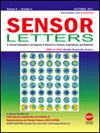Flexible Liquid Sensor Based on Rubber/Graphite Composite
引用次数: 0
Abstract
Hydrocarbon liquids such as gasoline, diesel, jet fuel, and solvents are hazardous materials derived from petroleum. These materials can diffuse the rubber network structures and cause swelling in these polymers. Rubber materials containing conductive fillers exhibit a high conductivity at the higher percolation threshold. As direct effect of solvent on the polymer, swelling in the rubber composite alters the structure of the filler network and subsequently the composite properties change significantly. This Process can be considered as a signal for solvent or hydrocarbon fuel detector system and used conductive rubber composite as a flexible sensor. In this study, the nitrile/graphite composite samples were prepared containing different amounts of graphite particles. These samples have the ability to measure electrical resistance. The electrical resistance of rubber/graphite samples decreases with increasing content of graphite particles. The increase in the electrical resistance of the specimens was measured by using conductive composite swelling in toluene solvent and it was observed that all specimens eventually became electrical insulation. Samples with concentrations of 60, 70, and 80 phr are conductive after recovery and solvent removal. While their conductivity is less than that of the virgin samples. The incremental trend of electrical resistance against the conductive composite swelling was measured in toluene solvent and it was observed that all samples were eventually converted to electrical insulation. But there is little difference between the third swelling process and the second one. This phenomenon has occurred for all three samples, which reveals a good similarity with the Mullins effect.基于橡胶/石墨复合材料的柔性液体传感器
碳氢化合物液体,如汽油、柴油、喷气燃料和溶剂,都是从石油中提取的有害物质。这些物质会使橡胶网状结构扩散,导致聚合物膨胀。含有导电填料的橡胶材料在较高的渗透阈值处表现出高导电性。由于溶剂对聚合物的直接作用,橡胶复合材料中的溶胀改变了填料网络的结构,从而使复合材料的性能发生显著变化。本工艺可视为溶剂或碳氢化合物燃料探测系统的信号,并采用导电橡胶复合材料作为柔性传感器。在本研究中,制备了含有不同数量石墨颗粒的腈/石墨复合样品。这些样品具有测量电阻的能力。橡胶/石墨试样的电阻随石墨颗粒含量的增加而降低。采用导电复合材料在甲苯溶剂中溶胀的方法测量了试样电阻的增加,并观察到所有试样最终都成为电绝缘。60,70和80phr浓度的样品在回收和溶剂去除后是导电的。而其电导率则低于未加工样品。在甲苯溶剂中测量了导电复合材料的电阻对膨胀的增量趋势,并观察到所有样品最终都转化为电绝缘。但第三次肿胀过程与第二次肿胀过程差别不大。这一现象在所有三个样本中都发生了,这表明与穆林斯效应有很好的相似性。
本文章由计算机程序翻译,如有差异,请以英文原文为准。
求助全文
约1分钟内获得全文
求助全文
来源期刊

Sensor Letters
工程技术-电化学
自引率
0.00%
发文量
0
审稿时长
6 months
期刊介绍:
The growing interest and activity in the field of sensor technologies requires a forum for rapid dissemination of important results: Sensor Letters is that forum. Sensor Letters offers scientists, engineers and medical experts timely, peer-reviewed research on sensor science and technology of the highest quality. Sensor Letters publish original rapid communications, full papers and timely state-of-the-art reviews encompassing the fundamental and applied research on sensor science and technology in all fields of science, engineering, and medicine. Highest priority will be given to short communications reporting important new scientific and technological findings.
 求助内容:
求助内容: 应助结果提醒方式:
应助结果提醒方式:


